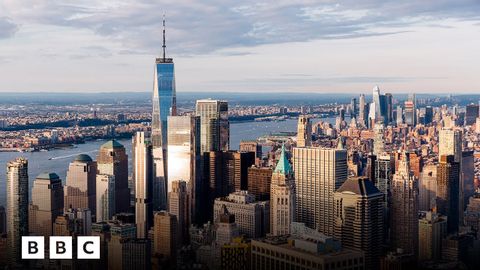紐約真的要沉沒了嗎? (Is New York really sinking? | BBC Global)
VoiceTube 發佈於 2024 年 06 月 24 日  沒有此條件下的單字
沒有此條件下的單字US /ɪˈsenʃəli/
・
UK /ɪˈsenʃəli/
- adv.本質上 ; 本來 ; 實質上;本質上;實際上
US /ɪˈvɛntʃuəli/
・
UK /ɪˈventʃuəli/
- adj.巨大的;大而重的;大量的;厚重的;大規模的
US /ˈprɑsˌɛs, ˈproˌsɛs/
・
UK /prə'ses/
- v.t.用電腦處理(資料);(依照規定程序)處理;處理;流程;加工;理解
- n. (c./u.)(規定的)程序;過程;進程;方法;法律程序;進程
